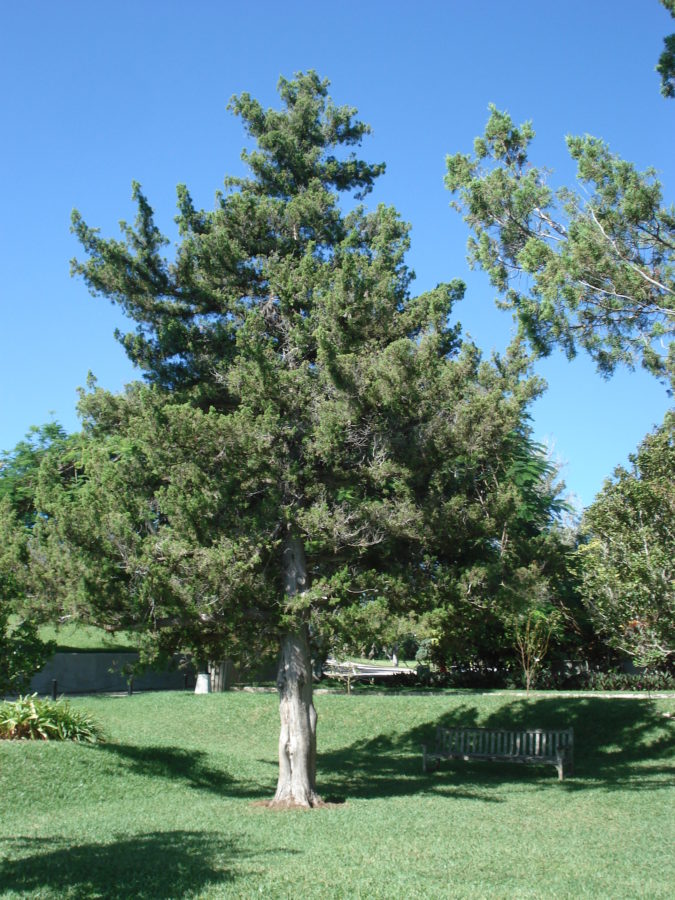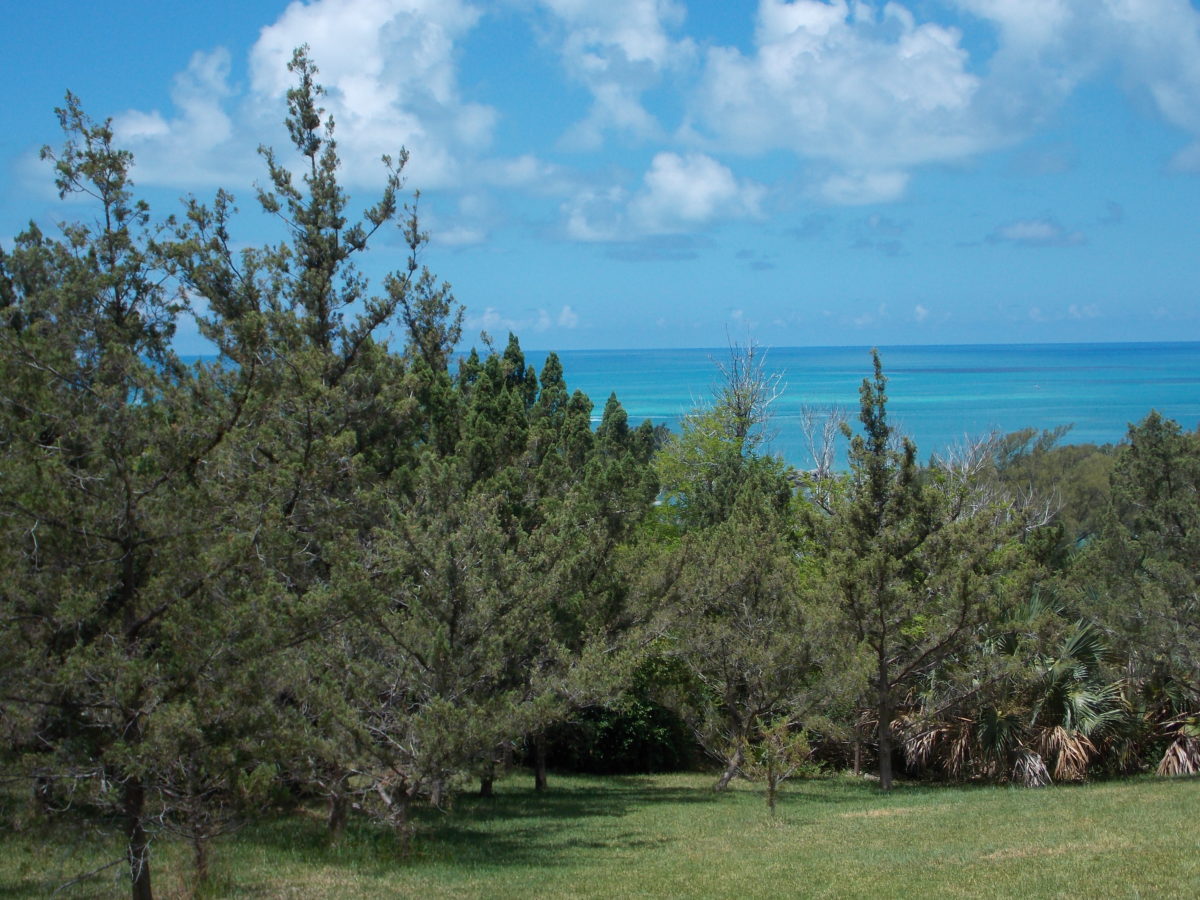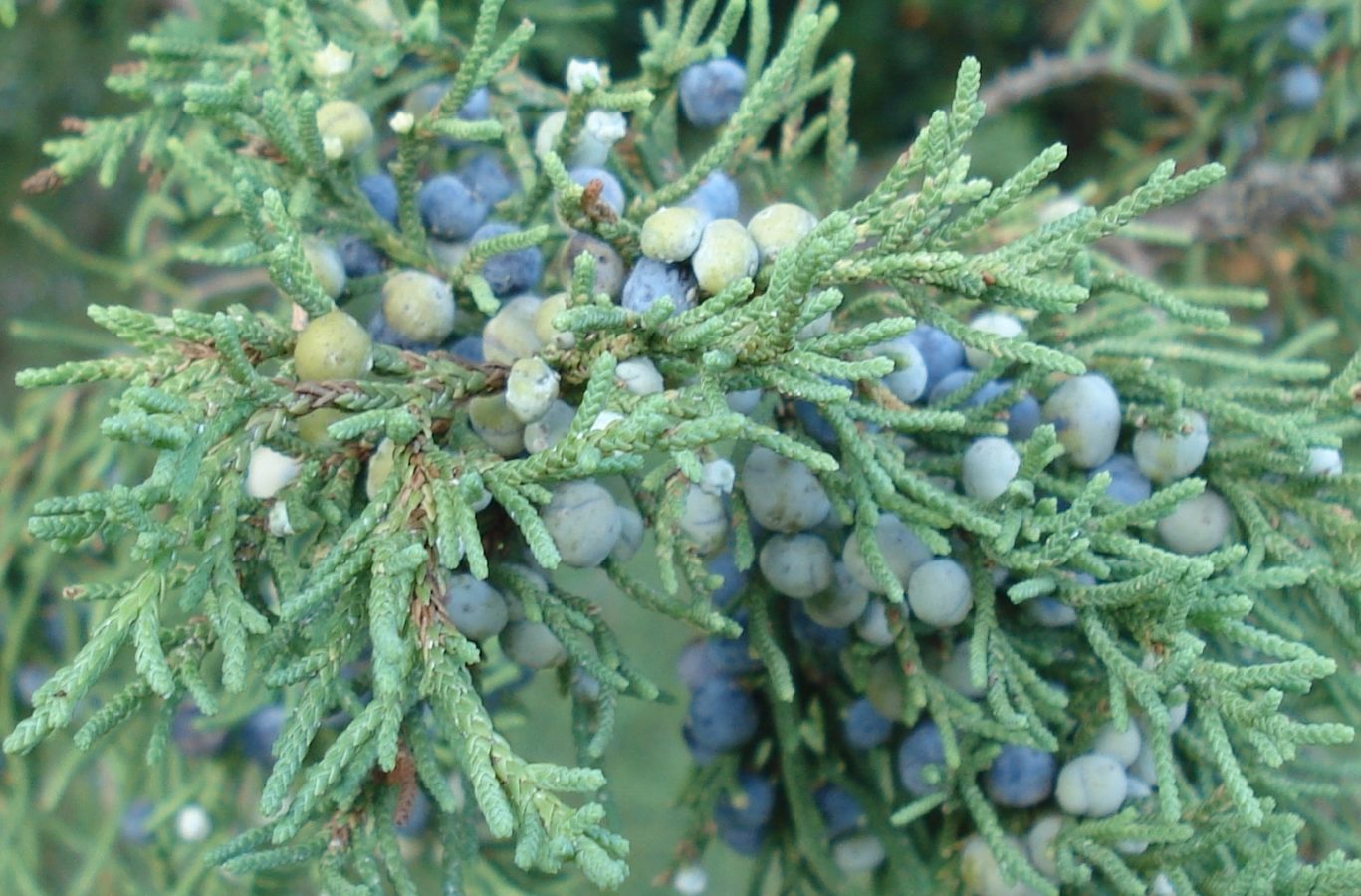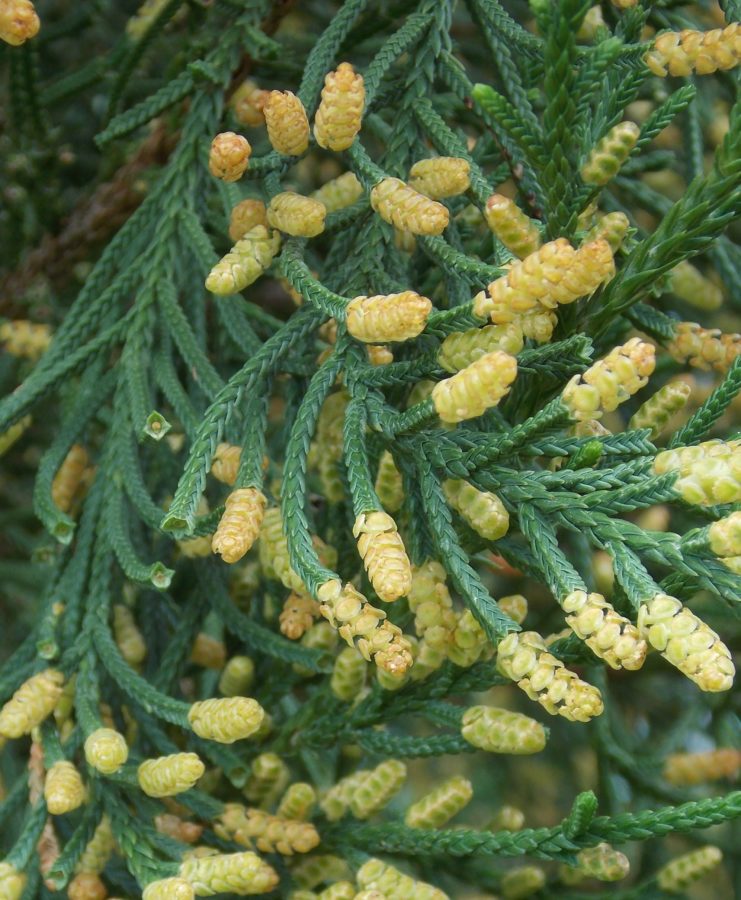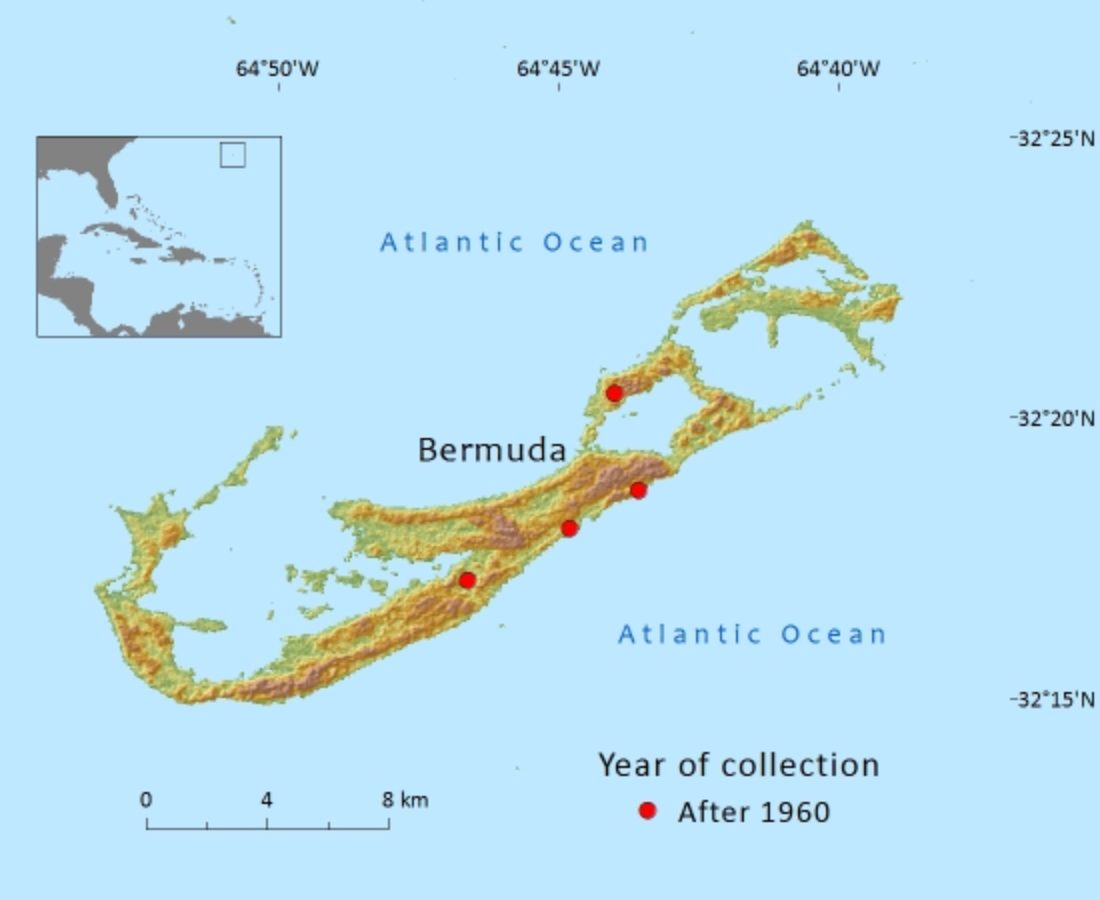Cupressaceae
Juniperus bermudiana
Endemic to Bermuda where historically it underwent a catastrophic decline of almost 95% due to scale insects, recent recovery is hampered by invasive plant species.
References and further reading
- Adams, R. and Wingate, D. (2008). Hybridization between Juniperus bermudiana and J. virginiana in Bermuda. Phytologia 90(2): 123-133.
- Adams, R.P. (2008). Juniperus bermudiana: a species in crisis, should it be rescued from introduced Junipers? Phytologia 90(2): 134-136.
- Bennett, F.D. and Hughes, I.W. (1959). Biological control of insect pests in Bermuda. Bulletin of Entomology Research 50: 423-436.
- Britton, N. (1918). Flora of Bermuda. Charles Scribner’s Sons, New York.
- Challinor, D. and Wingate, D. (1971). The struggle for the survivial of the Bermudan cedar. Biological Conservation 3(3): 220-222.
- Government of Bermuda. (2003). Protected Species Act 2003.
- Groves, G.R. (1955). The Bermuda cedar. Unasylva 9: 4.
- Groves, G.R. (1955). The Bermuda cedar. World Crops 7: 1-5.
- Phillips, B. (1984). Bermuda Cedar: Survival or extinction. Bermuda’s Heritage: 150-151.
- Procter, D. & Fleming, L.V. (eds.). (1999). Biodiversity: the UK Overseas Territories. Joint Nature Conservation Committee, Peterborough.
- Rueger, B. & von Wallmenich, T.N. (1996). Human impact on the forests of Bermuda: the decline of endemic cedar and palmetto since 1609, recorded in the Holocene pollen record of Devonshire Marsh. Journal of Paleolimnology 16: 59-66.
- Tucker, T. (1970). Orders and constitutions to preserve the cedars and other trees. Bermuda Hist. Quart. 27: 23-25.
- Wingate, D. (2001). Strategies for successful biodiversity conservation and restoration on small oceanic islands: some examples from Bermuda. In: (ed. M. Pienkowski) (ed.), Calpe (2000): Linking the Fragments of Paradise - An International Conference on Environmental Conservation in Small Territories, pp. 16-24. John Mackintosh Hall, Gibraltar.
- Wingate, D.( 2008). Point of view: Conservation of the Bermuda juniper. Phytologia 90(2): 137.
- Wingate, D.B. & Adams, R, Gardner, M. (2011). Juniperus bermudiana. In: IUCN 2012. IUCN Red List of Threatened Species. Version 2012.2. . Downloaded on 31 October 2012.
